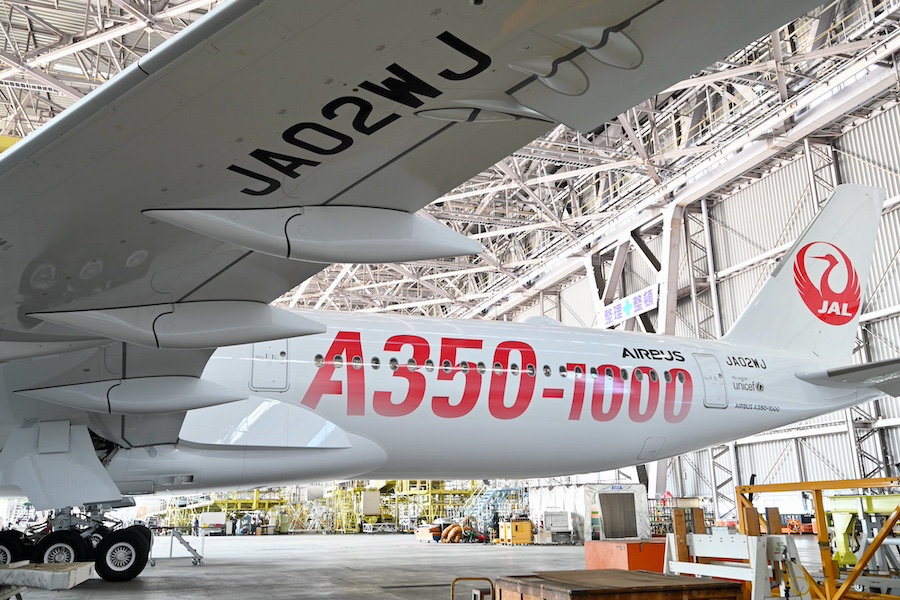
JAL’s Second A350-1000, ‘JA02WJ’, Also Features Red Logo; Third Aircraft Yet To Be Decided
Boeing forecasts a demand for approximately 44,000 new civil aircraft by the year 2043.
Ahead of the Farnborough Airshow, it released its 2024 Commercial Market Outlook (CMO), revealing that emerging markets and the demand in the global single-aisle market will be the driving force behind the industry’s growth. The breakdown includes 1,525 regional jets, 33,380 single-aisle aircraft, 8,065 wide-body aircraft, and 1,005 cargo aircraft, totaling 43,975 aircraft.
The global fleet of passenger and cargo aircraft is expected to almost double over the next 20 years, with single-aisle aircraft making up 76% of deliveries, with about half replacing older generation aircraft. Compared to 2023, over the next 20 years, air passenger traffic is expected to increase by an average of 4.7% annually. The number of aircraft will increase at an average annual rate of 3.2%, with increased seat utilization and aircraft operation hours leading to improved productivity.
By 2043, single-aisle aircraft are expected to account for 71% of the fleet, utilized for a versatile range of short to medium-haul flights. Wide-body aircraft numbers will more than double, with 44% of the Middle East’s fleet being wide-body aircraft.
Passenger growth rates are projected to be highest in South Asia at 7.4%, followed by Southeast Asia at 7.2%, and Africa at 6.4%, with emerging markets driving growth. Eurasia led in terms of the number of aircraft delivered.
Brad McMullen, Senior Vice President of Commercial Sales & Marketing, commented, “This is a challenging and exciting time for the aviation industry. Despite the ongoing global challenges and constraints in supply chains and production that we are all facing, the return to more typical levels of traffic growth demonstrates the resilience of the aviation industry.”
With the increase in demand in emerging markets comes the need for approximately 2.4 million new aviation personnel, including pilots, mechanics, and cabin crew, in addition to training support.